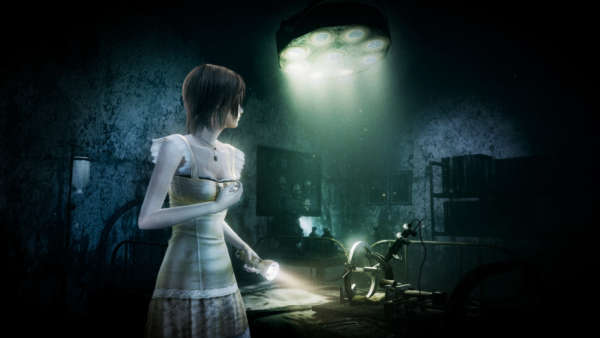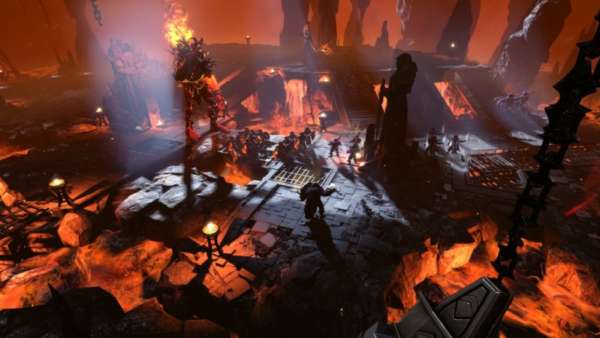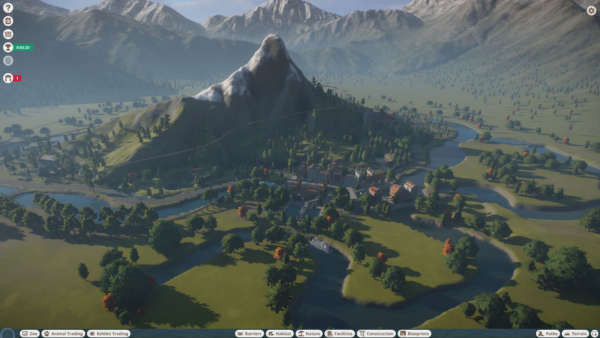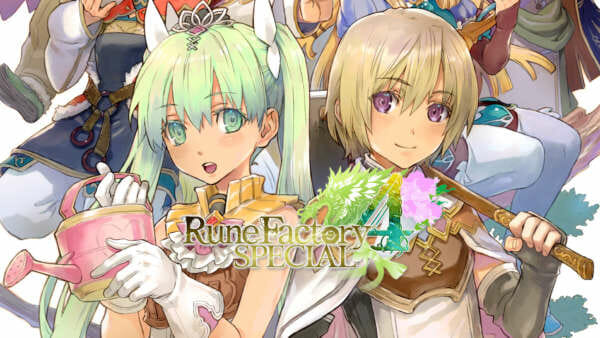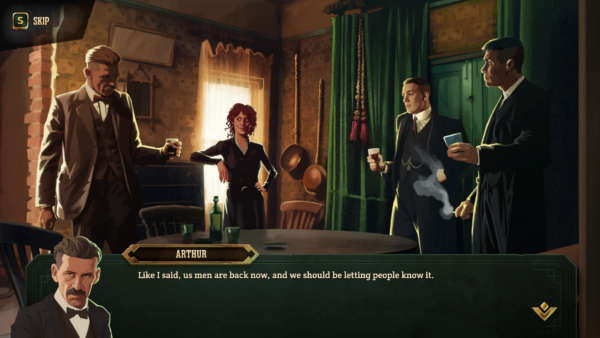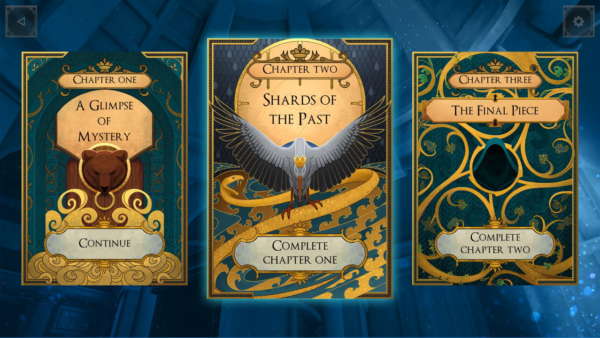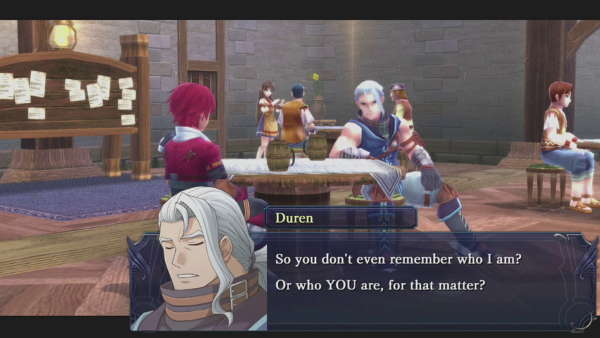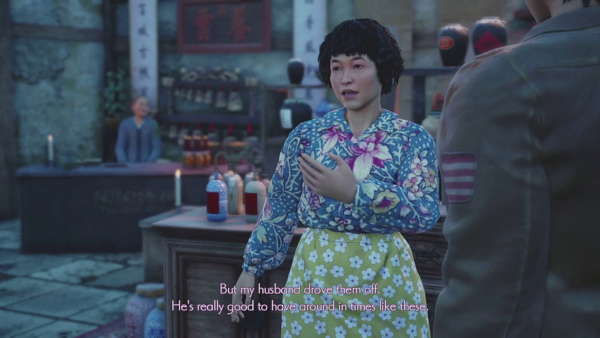It’s been four long years for the team at Thr3aks, but now what began as a student project is now a full-fledged game in the form of Beatbuddy: Tale of the Guardians. Re-imagining how games use their soundtracks, Beatbuddy creates a musical experience like no other. But will the experience be let down by the game itself?
Beatbuddy is a 2D adventure through the world of Symphonia, a world where music is the source of life and without it everything will end. You play as Beatbuddy, one of three ethereal guardians who keep the music playing in the world by sleeping. You and the other guardians, Harmony and Melody have been awoken by Prince Maestro and his army and must recover your resting places so you can return to sleep and resume the music. Along the journey you will meet Clef who will help you on the way to stopping Prince Maestro.
The gameplay in Beatbuddy is fairly simple, you float along in what seems to be an underwater world with only three initial abilities, a charge/sprint to get around faster, an attack to deal with enemies and the ability to grab and hold specific objects. These three mechanics will get utilised in a wide range of ways along your journey through Symphonia as you go around solving puzzles to progress. And for the most part they work great, though the charge can sometimes not work exactly in the way you meant it too, but unless you timed it badly you will recover from it.
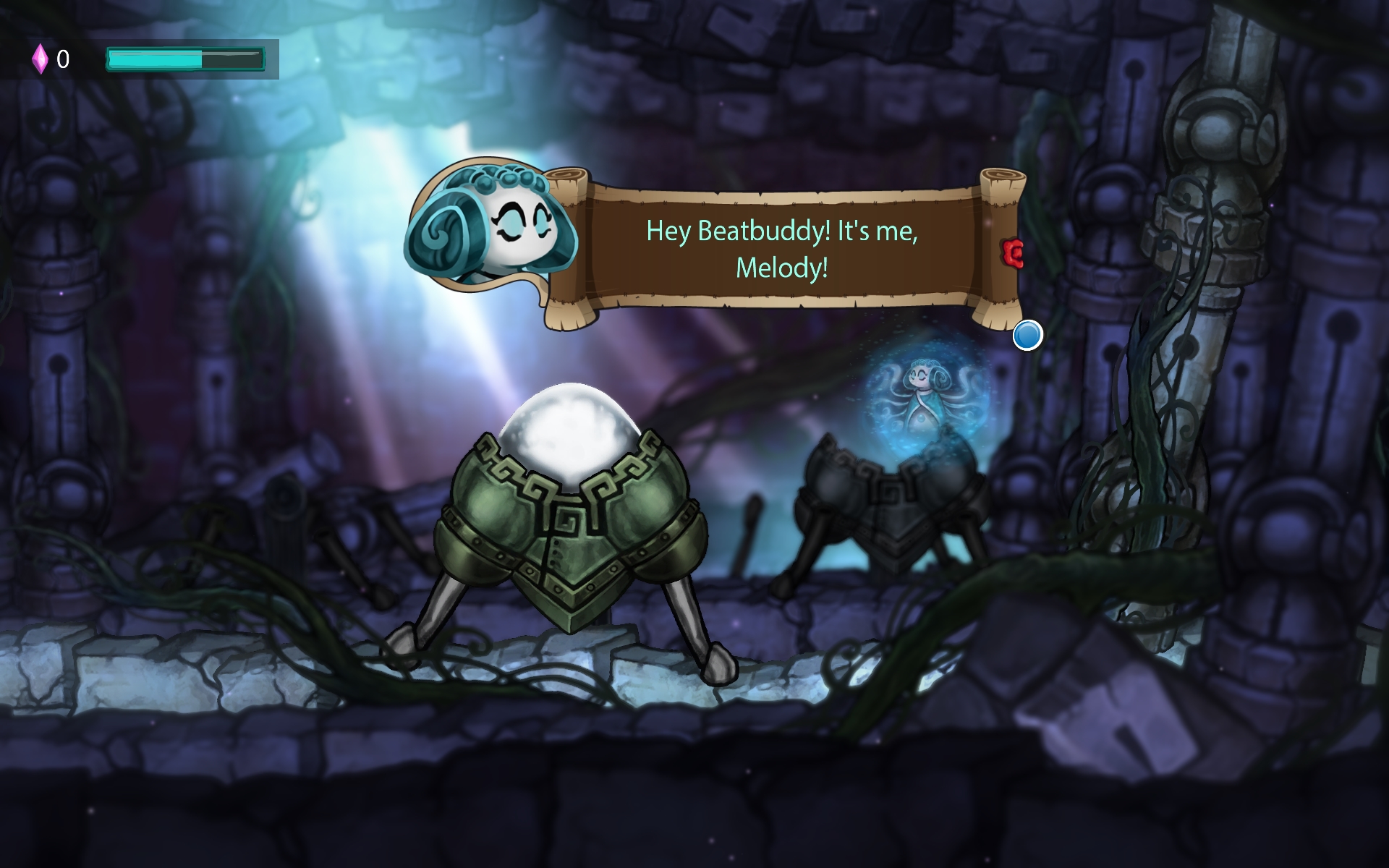
The only other real concern is the feel of the movement; it’s not very precise, which is unfortunate because some sections require the controls to be just that. This leads to you dying… a lot. Beatbuddy has been designed with difficulty in mind, which explains why there are no difficulty settings. This can be infuriating at times, as often one mistake in timing can lead to your death. Fortunately though checkpoints are generous and will help you get around this issue to some degree. Beatbuddy is challenging, but not really in an unfair way, it’s always clear why you died and the game immediately throws you back into the action when you do.
The most interesting part of the gameplay is by far the incorporation of the soundtrack. Everything you do to interact with the world alters the track, with enemy attacks in time with aspects such as the synthe beats and the bass drum controlling spring boards you use to get around the levels. The unique interactions between the player and the environment changes the standard length songs used as the soundtrack into continuously looping and changing remixes that span the entire 40 minute levels.
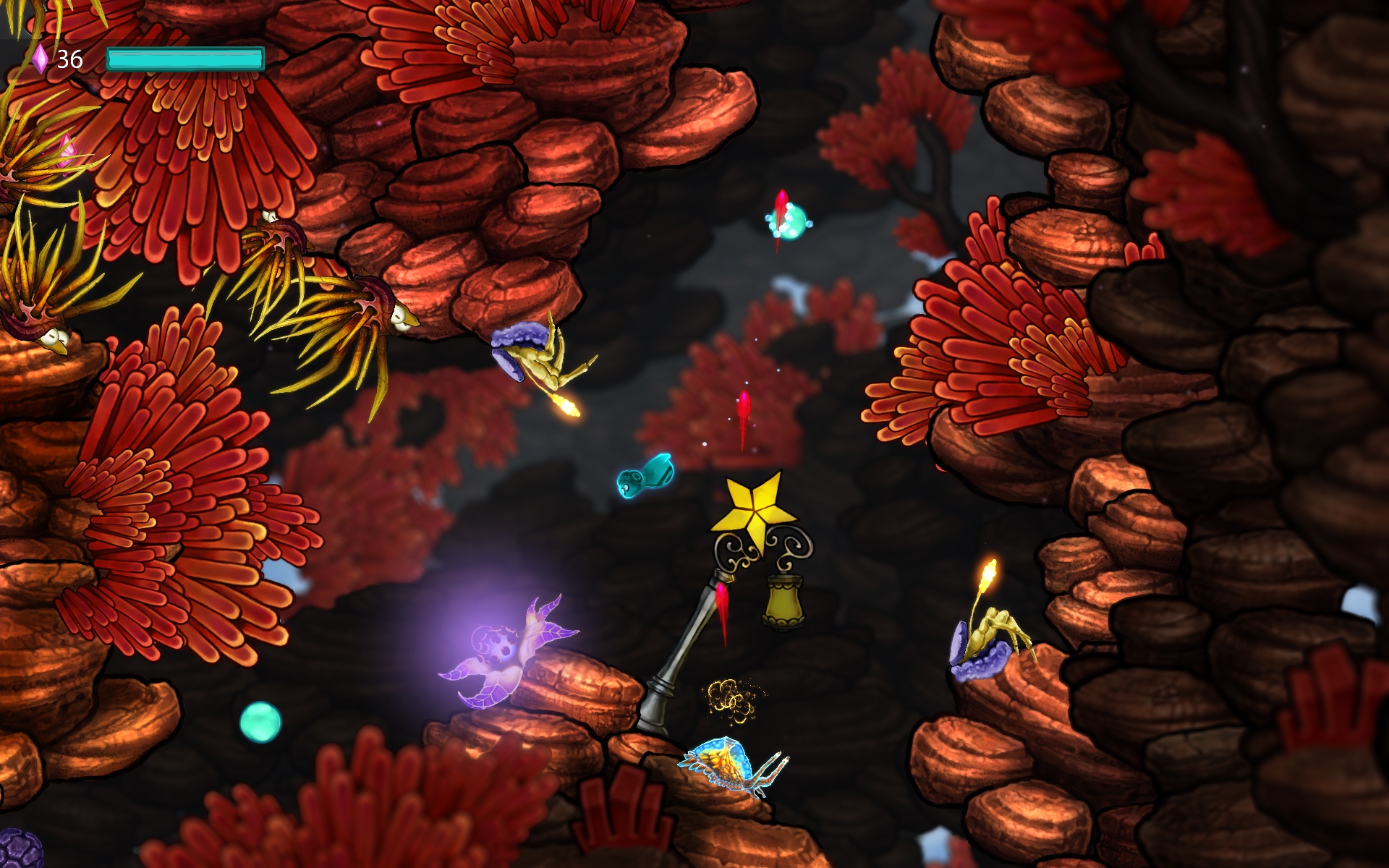
This impressive feat really adds to the Beatbuddy experience, so you can tell why it was important for the soundtrack to be just right. Fortunately this is not a problem, with songs from artists including the amazing Austin Wintory who worked on Journey, the six song soundtrack is bliss to listen to and with the Beatbuddy treatment you won’t get sick of hearing them for forty minutes at a time.
A reoccurring mechanic which is a lot of fun to play with is that of the Bubble Buggy. Also playing on the games usage of the soundtrack, the Bubble Buggy is a vehicle from the land of Symphonia which jumps along with the beat of the soundtrack. With the unique puzzles that the Bubble Buggy provides, it’s a welcome addition to each level in the game and, personally, one of my favourite parts as whilst you get to ride the Buggy, the soundtrack comes alive, allowing you to hear the mastery of each song.
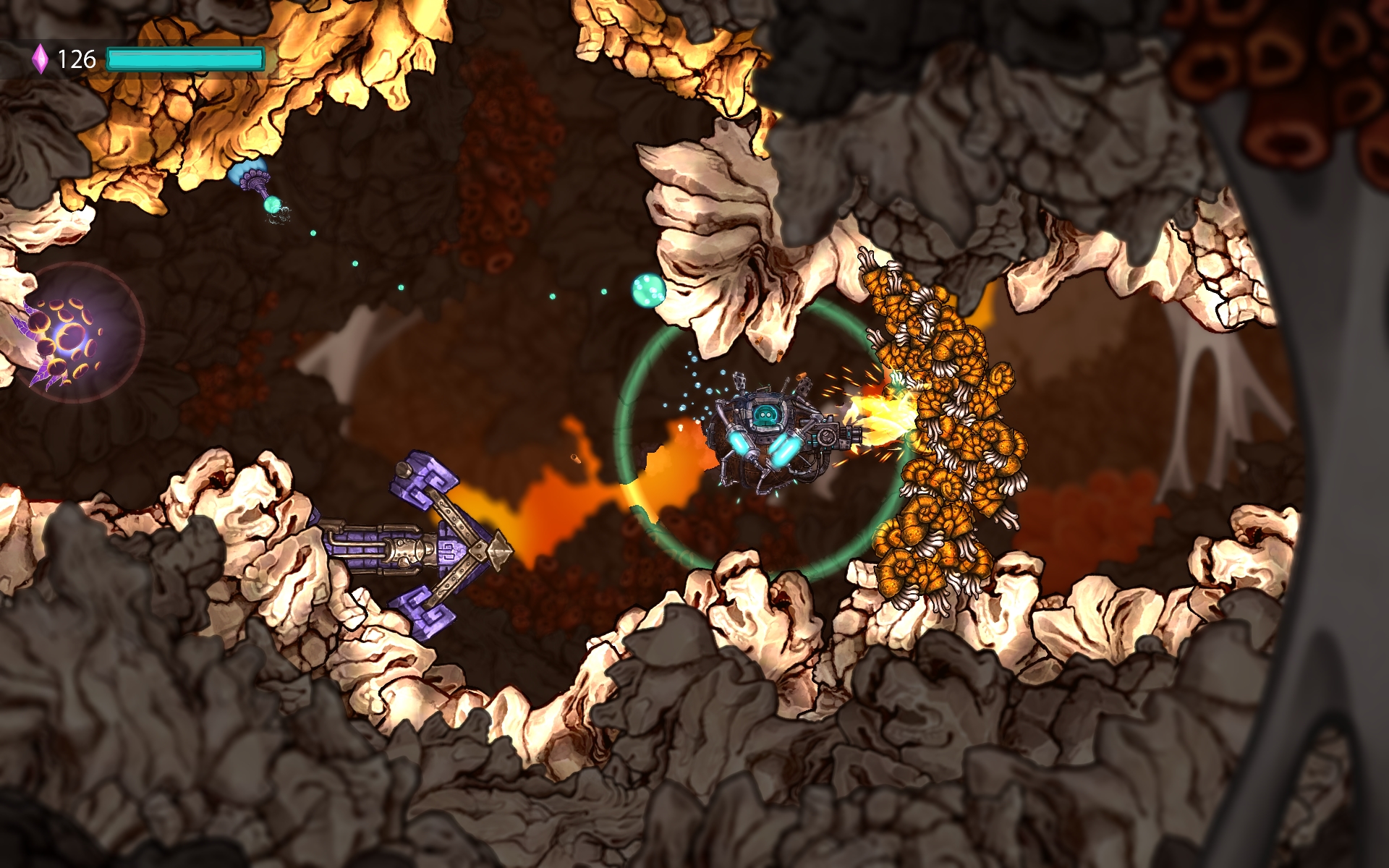
With such simplistic mechanics and player controls, you would surely think the game would get stale after a couple of levels. However, this is where you would be wrong as the game throws mechanic after mechanic at you to keep the gameplay varied. Thr3aks have clearly spent the necessary time making sure that the game’s pacing was correct. Each new mechanic is added just as the player becomes well acquainted with the previous, evolving the game as it progresses. Even towards the games climax, a point when most games test you on the games mechanics, new mechanics will await the player to keep the players interest.
The graphical style for Beatbuddy is another thing to be commended. The 2D drawings on a parallax backdrop work wonderfully to bring Beatbuddy to life, with very few exceptions. Whilst it is only a minor problem, the foreground imagery can occasionally block your view, particularly in the Hive level. Other than that small problem, the graphical style is superb and the animation smooth. The 2D drawn style fits wonderfully with the soundtrack to create a vibrant and colourful world and is pleasing to the eyes. With every asset clearly having plenty of attention paid to detail, the world of Symphonia feels alive.
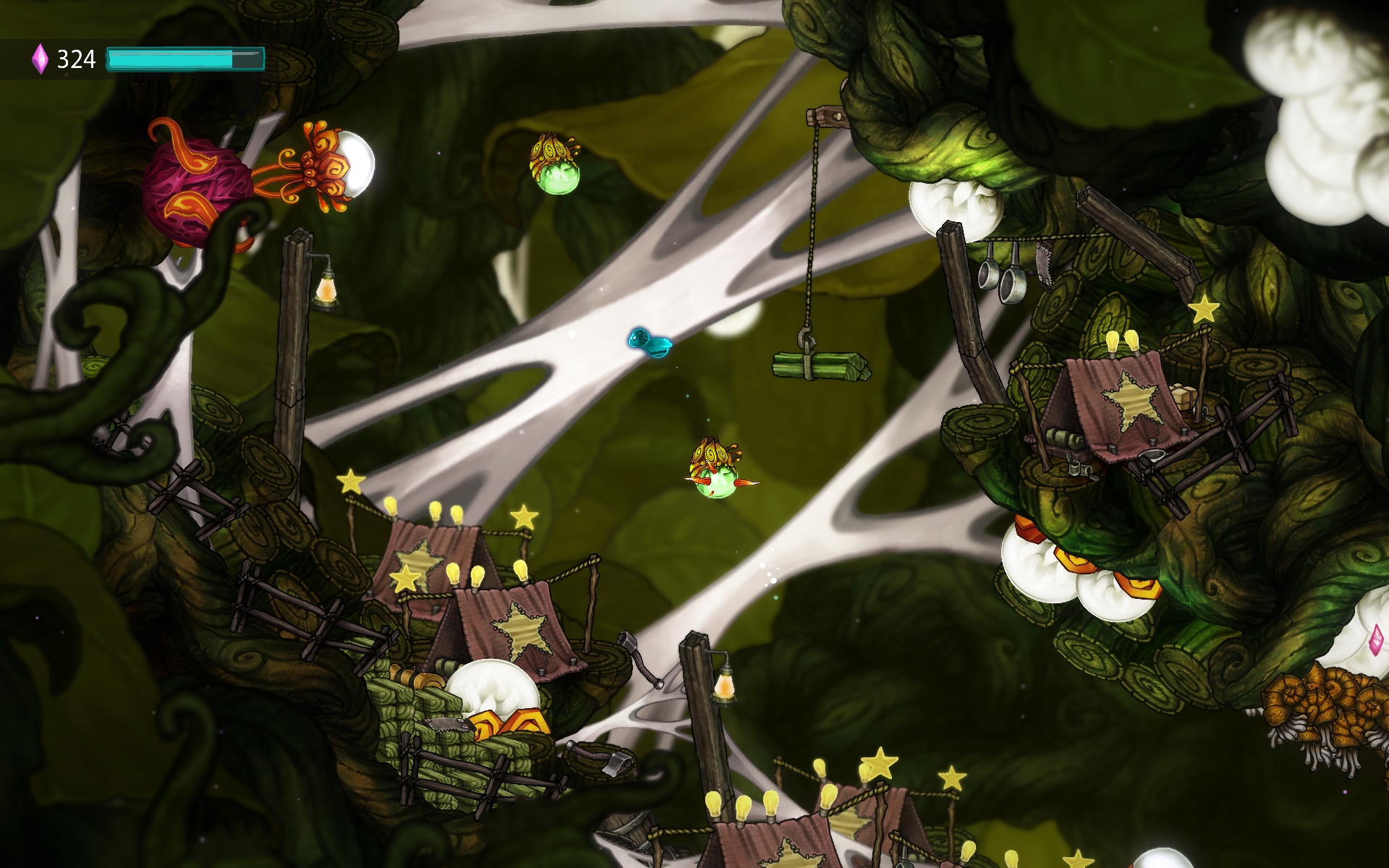
To conclude, Beatbuddy is a solid puzzle-adventure with an equally solid soundtrack to match. Whilst the difficulty can be infuriating at times, it is fair and satisfying when you pass a hurdle you were struggling with. The pace of the game is wonderful, never slowing down and continuously building up to the crescendo. Whilst the story may be a bit less interesting, the world itself is pure bliss and kept me coming back for more. I can see myself spending a lot more time in the world of Symphonia.
